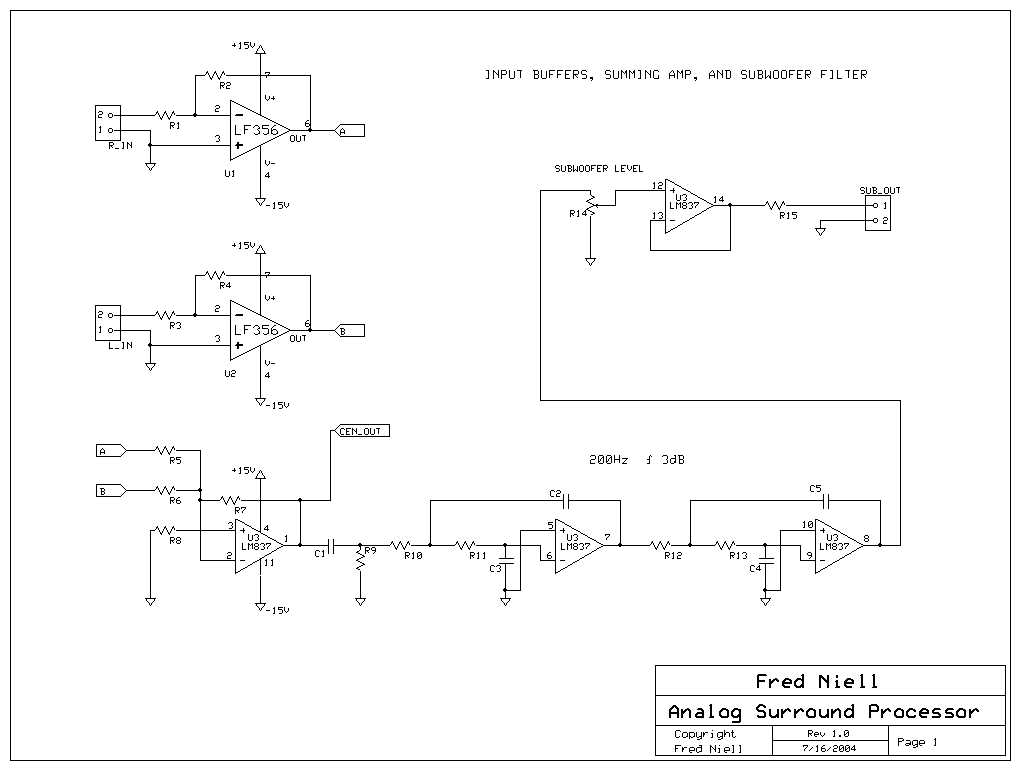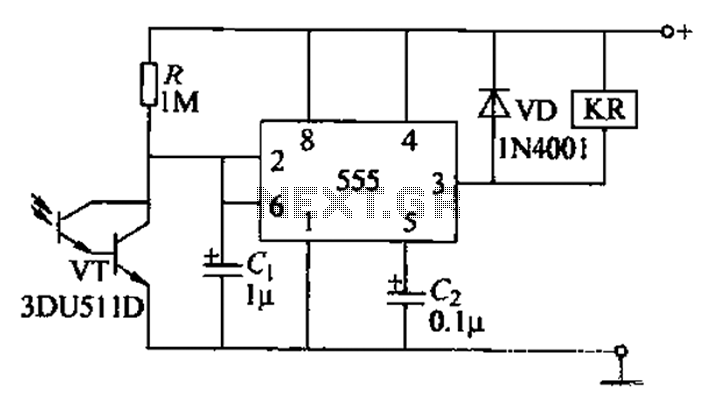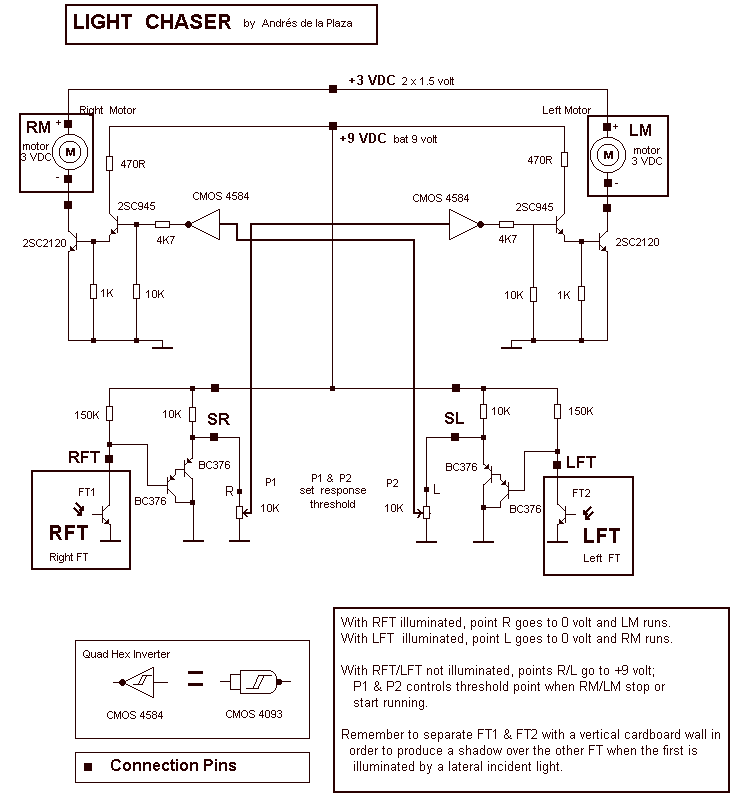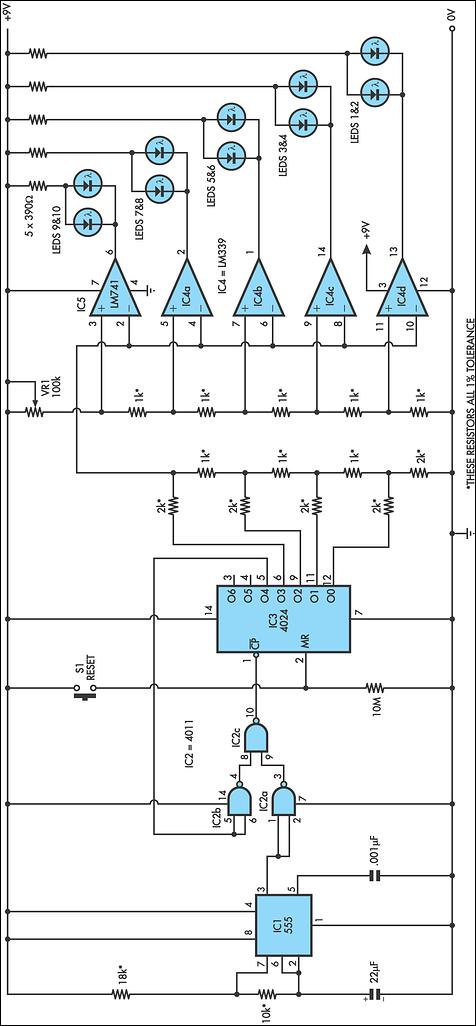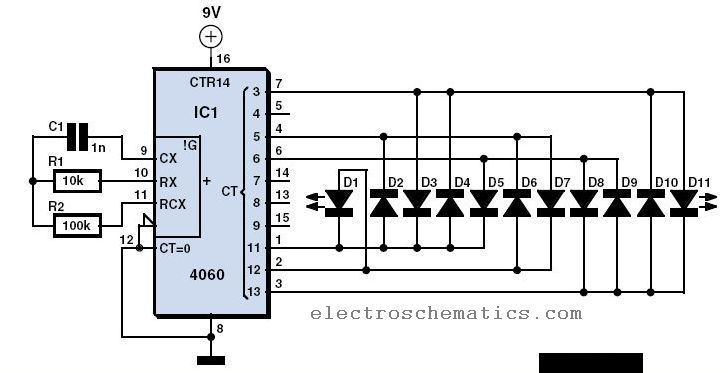
6-Channel Running Light
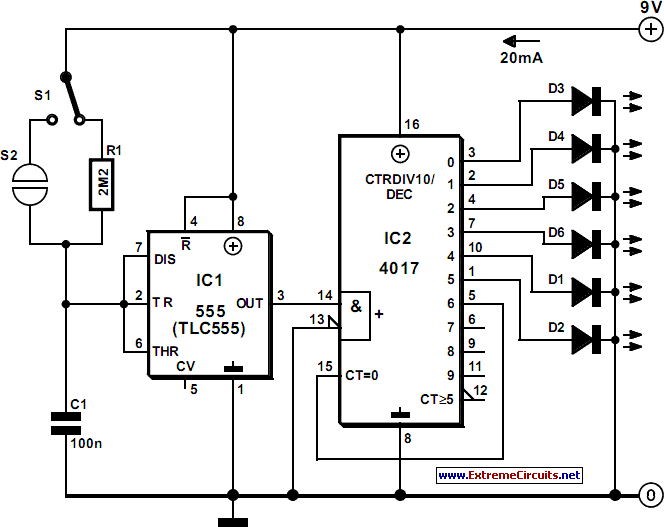
The circuit of the running light consists of two integrated circuits (ICs), a resistor, a capacitor, and seven light-emitting diodes (LEDs), along with a decade scaler IC.
The running light circuit is designed to create a sequential lighting effect using seven LEDs. The primary components include two integrated circuits which serve different functions: one IC acts as a timer while the other operates as a decade scaler. The timer IC is responsible for generating timing pulses that control the sequence of the LEDs, ensuring that they light up in a specific order.
A resistor is included in the circuit to limit the current flowing through the LEDs, preventing them from drawing excessive current that could lead to damage. The value of this resistor is selected based on the forward voltage and current specifications of the LEDs used.
The capacitor in the circuit works in conjunction with the timer IC to establish the timing intervals between the LED activations. By charging and discharging, the capacitor helps to determine how long each LED remains illuminated before the next one in the sequence turns on.
The decade scaler IC is crucial in this circuit as it divides the input frequency from the timer IC by ten, allowing for a controlled and manageable sequence of LED activations. This IC ensures that the LEDs light up in a staggered manner, creating a visually appealing running light effect.
Overall, this running light circuit is an effective demonstration of basic electronic principles, integrating timing, current control, and sequential logic to achieve a dynamic lighting display.The circuit of the running light comprises two integrated circuits (ICs), a resistor, a capacitor and seven light-emitting diodes (LEDs), Decade scaler IC.. 🔗 External reference
The running light circuit is designed to create a sequential lighting effect using seven LEDs. The primary components include two integrated circuits which serve different functions: one IC acts as a timer while the other operates as a decade scaler. The timer IC is responsible for generating timing pulses that control the sequence of the LEDs, ensuring that they light up in a specific order.
A resistor is included in the circuit to limit the current flowing through the LEDs, preventing them from drawing excessive current that could lead to damage. The value of this resistor is selected based on the forward voltage and current specifications of the LEDs used.
The capacitor in the circuit works in conjunction with the timer IC to establish the timing intervals between the LED activations. By charging and discharging, the capacitor helps to determine how long each LED remains illuminated before the next one in the sequence turns on.
The decade scaler IC is crucial in this circuit as it divides the input frequency from the timer IC by ten, allowing for a controlled and manageable sequence of LED activations. This IC ensures that the LEDs light up in a staggered manner, creating a visually appealing running light effect.
Overall, this running light circuit is an effective demonstration of basic electronic principles, integrating timing, current control, and sequential logic to achieve a dynamic lighting display.The circuit of the running light comprises two integrated circuits (ICs), a resistor, a capacitor and seven light-emitting diodes (LEDs), Decade scaler IC.. 🔗 External reference
